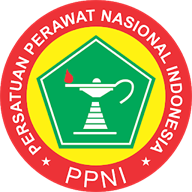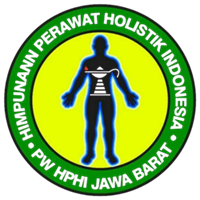Factors Affecting the Pittsburgh Sleep Quality Index (PSQI) Score in Nursing Students at STIKes Muhammadiyah Ciamis
DOI:
https://doi.org/10.52221/jvnus.v1i2.159Keywords:
Sleep Quality, Caffeine Consumption, Smoking, Stress Level, Gadget Addiction LevelAbstract
Poor sleep quality is a factor in many medical ailments and there is a strong relationship between physical and psychological health. Sleep is a state in which the brain does not process information from sensory neurons and does not give commands to motor neurons. A person's sleep quality can be determined using the Pittsburgh Sleep Quality Index (PSQI) method. The purpose of this study was to describe the factors that influence the value of the Pittsburgh Sleep Quality Index (PSQI) for undergraduate nursing students at STIKes Muhammadiyah Ciamis. The research method used is cross-sectional. The total population is 359 students of STIKes Muhammadiyah Ciamis Nursing Study Program with a research sample of 77 people. The sampling method used the Proportional Random Sampling technique. The results showed that 61 respondents had poor sleep quality, 26 respondents experienced severe stress, 58 respondents experienced a high level of gadget dependence, 48 respondents were in the no smoking category, and 48 people were in the no caffeine consumption category. Based on this research, it can be concluded that the description of sleep patterns in STIKes Muhammadiyah Ciamis Nursing study program students is still dominated by poor sleep quality, so they need to pay attention to improve their sleep quality as an effort to prevent various diseases, improve individual health, and maximize focus and attention. concentration
Downloads
References
Alshobaili, F., & Alyousefi, N. (2019). The effect of smartphone usage at bedtime on sleep quality among Saudi non- medical staff at King Saud University Medical City. Journal of Family Medicine and Primary Care, 8(6), 1953.
Firmansyah, A., Jahidin, A., & Najamuddin, N. I. (2019). Efektivitas Penyuluhan Dengan Menggunakan Media Leaflet Dan Video Bahasa Daerah Terhadap Pengetahuan Bahaya Rokok Pada Remaja. Bina Generasi: Jurnal Kesehatan, 11(1), 80-86.
Haryati, & Yunaningsih, S. patma. (2019). Faktor yang mempengaruhi kualitas tidur mahasiswa fakultas kedokteran universitas halu oleo. jurnal medika hutama, 01(03), 146–156.
Hayati, D. N., Kristina, S. A., Prabandari, Y. S., Farmasi, F., & Mada, U. G. (2019). Gambaran Ketergantungan Nikotin pada Rokok Elektronik/Vape Dikalangan Mahasiswa Yogyakarta. Majalah Farmaseutik, 16(2), 170–175. https://doi.org/10.22146/farmaseutik.v16i 2.52211
Hershner, S. d, & Chervin, ronald d. (2014). Causes and consequences of sleepiness among college students. Nature and Science of Sleep, 6, 73–84.
Hinz, A., Glaesmer, H., Brähler, E., Löffler, M., Engel, C., Enzenbach, C., … Sander, C. (2017). Sleep quality in the general population: psychometric properties of the Pittsburgh Sleep Quality Index, derived from a German community sample of 9284 people. Sleep Medicine, 30 (May2016), 57–63.
Keswara, U. R., Syuhada, N., & Wahyudi, W.T. (2019). Perilaku penggunaan gadget dengan kualitas tidur pada remaja. Holistik Jurnal Kesehatan, 13(3), 233– 239. https://doi.org/10.33024/hjk.v13i3.1599
Levenson, J. C., Kay, D. B., & Buysse, D. J. (2015). The pathophysiology of insomnia. Chest, 147(4), 1179–1192. https://doi.org/10.1378/chest.14-1617
Liveina, & Artini I G A. (2013). Pola Konsumsi dan Efek Samping Minuman Mengandung Kafein pada Mahasiswa Program Studi Pendidikan Dokter Fakultas Kedokteran Universitas Udayana. Departemen Farmakologi Fakultas Kedokteran Universitas Udayana, Bali, Indonesia, 1–12.
Lohitashwa, R., Kadli, N., Kisan, R., A, S., & Deshpande, D. (2015). Effect of stress on sleep quality in young adult medical students: a cross sectional study. International Journal of Research in Medical Sciences, 3(12), 3519–3523. https://doi.org/10.18203/2320- 6012.ijrms20151391
Lubis, R., Irma, N. H., Wulandari, R., Siregar, K., Tanjung, A., Wati, T. A., … Syahfitri, D. (2015). Coping Stress Pada Mahasiswa Yang Bekerja. Diversita, 1(2), 48–57. Diambil dari. https://ojs.uma.ac.id/index.php/diversita/a rticle/view/494/339
Mwape, R. K., & Mulenga, D. (2019). Consumption of Energy Drinks and Their Effects on Sleep Quality among Students at the Copperbelt University School of Medicine in Zambia, 2019.
Najamuddin, N., & Firmansyah, A. (2017). HUBUNGAN KEBIASAAN MEROKOK DENGAN TIMBULNYA TANDA-TANDA SMOKER’S MELANOSIS DI LINGKUNGAN POKKO KECAMATAN ANREAPI KABUPATEN POLEWALI MANDAR. Bina Generasi: Jurnal Kesehatan, 9(1).
Oktaria, S. (2019). Hubungan Antara Konsumsi Minuman Berkafein Dengan Pola Tidur Pada Mahasiswa Teknik. Jurnal Kesehatan Masyarakat & Gizi, e- ISSN: 2655-0849, 1(2).
Rachmawati Mustikasari, V. M. (2018). Tingkat Kecemasan dan Stres pada Mahasiswa yang Mengikuti Objective structure clinical examination (OSCE). Jurnal Persatuan Perawat Nasional Indonesia (JPPNI), (Vol 3, No 3 (2018)), 157–164.
Reza, R. R., Berawi, K., Karima, N., & Budiarto, A. (2019). Fungsi Tidur dalam Manajemen Kesehatan. majority, 8(2), 247–253.
Riana, Y., Hariani, D., Mahardika, A., Ayu, A. A., & Wedayani, N. (2019). Hubungan antara Penggunaan Smartphone denganKualitas Tidur pada Siswa SMAN 1 Mataram di Kota Mataram dan SMAN 1 Gunungsari di Kabupaten Lombok Barat. Jurnal Kedokteran, 8(3), 33–39.
Sleep Health Foundation. (2013). Caffeine, Food, Alcohol, Smoking and Sleep. Sleep Health, 1-2
Sulistiyani, C. (2012). Beberapa Faktor Yang Berhubungan Dengan Kualitas Tidur Pada Mahasiswa Fakultas Kesehatan Masyarakat Universitas Diponegoro Semarang. jurnal kesehatan masyarakat, 1(2).
Susilo, Y., & Wulandari, A. (2011). Cara Jitu Mengatasi Insomnia. (M. A. S, Ed.) (I). Yogyakarta: ANDI.
Sutjiato, M., & Tucunan, G. D. K. a a T. (2015). Hubungan Faktor Internal dan Eksternal dengan Tingkat Stress pada Mahasiswa Fakultas Kedokteran Universitas Sam Ratulangi Manado. Jikmu, 5(1), 30-42.
Taufikkurrahman. (2019). Hubungan Penggunaan SmartphoneTerhadap Tingkat Obesitas Dan Kebugaran Jasmani Siswa SMPN 1 Jombang Usia 13-15 Tahun. Journal Sporta Saintika, 4(1), 41–57.
Thomas, C. M., McIntosh, C. E., Lamar, R. A., & Allen, R. L. (2017). Sleep deprivation in nursing students: The negative impact for quality and safety. Journal of Nursing Education and Practice, 7(5), 87. https://doi.org/10.5430/jnep.v7n5p87
Yogesh, S., Abha, S., & Priyanka, S. (2014). Mobile usage and sleep patterns among medical students. Indian Journal of Physiology and Pharmacology, 58(1) 100–103.
Zahara, R., Nurchayati, S., & Woferst, R. (2013). Gambaran Insomnia Pada Remaja Di SMK Negeri 2 Pekanbaru. JOM FKp, 5(2), 278–286.
Downloads
Published
How to Cite
Issue
Section
License
Copyright (c) 2019 JURNAL VNUS (Vocational Nursing Sciences)

This work is licensed under a Creative Commons Attribution 4.0 International License.


















